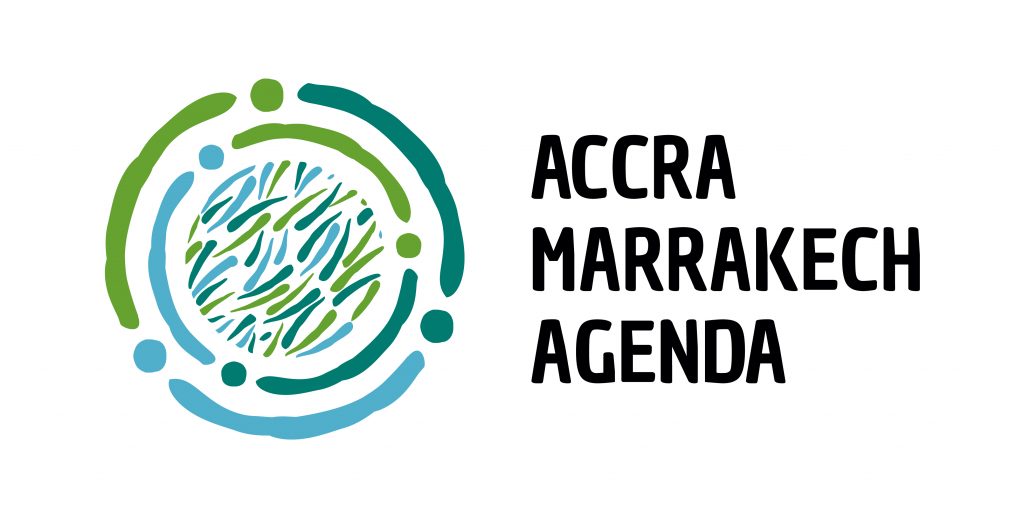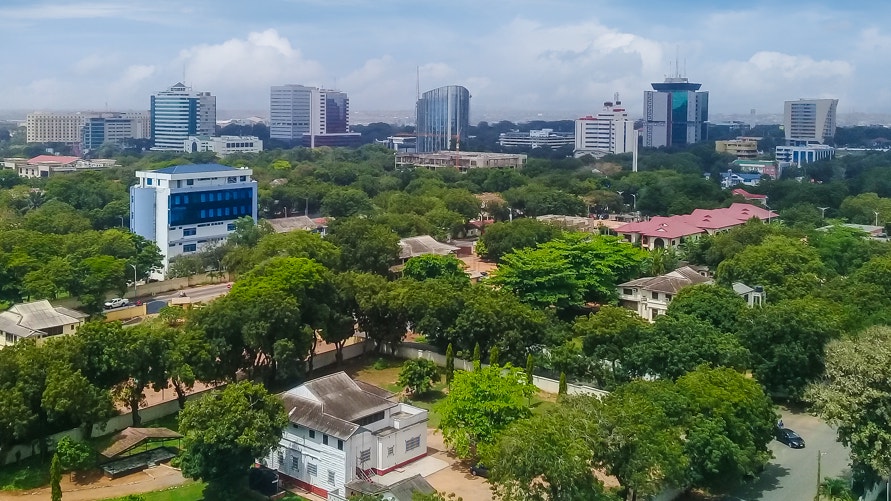

Accra-Marrakech Agenda
Adopted on October 16, 2023
Accra-Marrakech Agenda October 16, 2023: Download PDF here.
Accra-Marrakech Agenda April 3, 2023: Download PDF here.
#1 MAKE DEBT WORK FOR THE CLIMATE
It is urgent that we make debt work for the most vulnerable and that we overcome the cost of capital hurdles.
What is needed:
- A reform of the Common Framework that enables all debt distressed climate vulnerable developing economies to obtain the necessary debt relief in a predictable, efficient and timely manner, so that V20 countries can leverage new financing to pursue their Climate Prosperity Plans.
- Guarantees and other incentives such as debt service standstills to encourage the participation of all creditor classes for speedy resolution of debt negotiations.
- Credit enhancement should accompany debt restructuring (including shock resilient debt and swaps) to attract new investment for development-positive climate action, and incentives for existing creditors to participate early.
- Given the climate insecure future for economies, debt treatment should support the enhancement of climate resilience and the transition to climate-smart development, and inclusive debt-sustainability analysis considering the investment needs of national climate strategies and plans such as Climate Prosperity Plans.
#2 TRANSFORM THE INTERNATIONAL AND DEVELOPMENT FINANCIAL SYSTEM
There is more than sufficient financial resources in the world economy to transform economies. However, a decisive shift of financial flows is required to unlock the potential of the system. For as long as public international and development finance continue to support brown (carbon-intensive/climate-heating) and risky (non-climate future adapted) investments instead of green and resilient ones, the transformational potential of the transition is undermined.
What is needed is:
- A complete pre-2030 shift of public development and international finance from brown to green, and from risky to resilient, that begins now, shifting public financial support away from climate-incompatible investments to renewable energy, resilient infrastructure and nature-based solutions underpinned by development strategies into evolving Nationally Determined Contributions and Climate Prosperity Plans.
- Optimize the use of capital of MDBs/DFIs, adding momentum behind this shift by enabling higher lending ratios to capital for new investments that are green and resilient, and lowering lending ratios to capital for brown and risky investments, justified by the now evident reality of the different overall risk profiles that pertain to each class of investment.
- Increase the utilization of IMF Special Drawing Rights (SDRs) and Administered Accounts for development-positive climate action especially in most vulnerable economies, including through wrap-around guarantees and enhanced access to the Resilience and Sustainability Trust (RST).
- Recognition of Climate Prosperity Plans and other development-positive climate action investment plans to unlock beneficial SDR/RST access and rechanneling of SDRs through DFIs and MDBs.
- Support for development-positive climate investments in most vulnerable economies to have access to global capital markets through dedicated listing boards on major stock exchanges.
- Capital increases in multilateral development banks.
#3 A NEW GLOBAL DEAL ON CARBON FINANCING
We need a new global deal on carbon finance to realize the goal of the Paris Agreement in the near-term, prior to 1.5ºC overshoot lock-in. This demands substantial strengthening of 2030 climate targets of major polluting economies that can be enabled through the promotion of ambitious development-positive climate action in low-emitting developing economies. Win-win carbon-finance exchanges can help meet global goals, deliver fair-share action, and provide crucial financial support for ambitious climate action that would otherwise not be viable.
What we need:
- All major polluting economies whose 2030 Paris Agreement emission targets fall short of its central goal – the 1.5ºC limit – on a fair-shares basis (accounting for past emissions, per head pollution, and wealth disparities) must strengthen targets, starting in 2023, until full and equitable compliance is achieved.
- Make full use of the Paris Agreement’s international emissions exchange instruments, and rapidly scale-up public cooperation with low-emitting developing economies, and especially most vulnerable economies, aimed at providing crucial financial support for development-positive climate action, such as Climate Prosperity Plan projects, in exchange for internationally transferred mitigation outcomes, thus enabling major polluting economies to meet more ambitious and equitable national emission targets.
- Alongside an upscaling intergovernmental global carbon exchange, link major polluting markets with low polluting markets so as to enable the private sector to exchange emissions outcomes and finance independent of public level cooperation, in order to achieve net zero or carbon negative pathways.
#4 REVOLUTIONIZE RISK MANAGEMENT FOR OUR CLIMATE INSECURE WORLD ECONOMY
We must double down on efforts to accept and address the new climate insecure reality of the world economy and put in place with anticipatory finance (pre-arranged and trigger-based funds) for loss and damage and mainstream surveillance and monitoring of climate risks of all kinds (physical, transition, spillover) in IFI finance and credit rating practices, including through the landmark G7-V20 Global Shield against Climate Risks.
What we need:
- Scale-up of pre-arranged financing options to tackle climate impacts and shocks especially for most vulnerable economies, improving the access, management, and delivery of resources ahead of time, instead of post-disaster responses underscored by efforts under the G7/V20 Global Shield.
- Increase the utilization of trigger-based design in relevant public and private financial instruments[1], leveraging latest data and science to eclipse the prevailing practice of after-the-fact assessments[2].
- Addition of a dedicated OECD DAC marker for climate-related loss and damage, in order to better track development finance contributions focused on addressing growing climate impacts and shocks among most vulnerable economies.
- Systematically make universal surveillance of all climate risks inclusive of physical risks, transition risks and spillover risks for every economy in IMF Article IV surveillance a reality by 2025.
- Financial regulators should ensure that all leading credit rating agencies fully account for climate risks (physical, transition, spillover) in their assessment methodologies of public and private economic entities and capital/debt instruments and securities (inclusive of derivative markets) in order to incentivize climate action and penalize climate incompatible businesses and investments in the near-term (by 2025 at the latest).
__________

